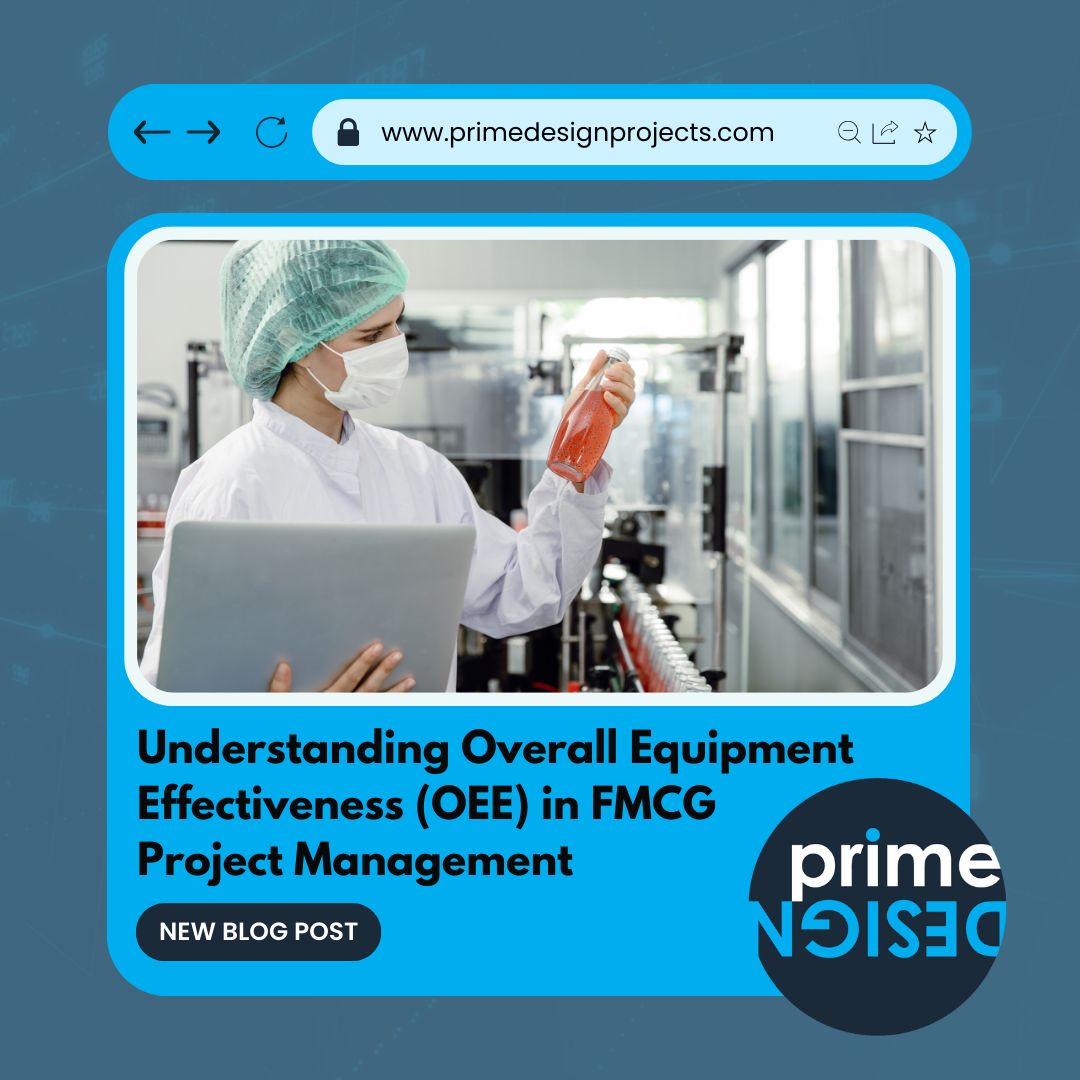Understanding Overall Equipment Effectiveness (OEE) in FMCG Project Management
In the fast-moving consumer goods (FMCG) industry, optimising production efficiency is paramount for project management businesses to stay competitive. One crucial metric that aids in achieving this optimisation is Overall Equipment Effectiveness (OEE). In this blog post, we'll dive into what OEE entails, its significance in FMCG production lines and how project management businesses can leverage it to enhance operations.
What is Overall Equipment Effectiveness (OEE)?
OEE is a performance metric that measures the productivity of equipment in manufacturing processes. It provides insights into how effectively equipment is utilised by analysing three key factors: Availability, Performance and Quality.
1. Availability: This component assesses the percentage of time that equipment is available for production. Downtime due to breakdowns, changeovers or maintenance reduces availability.
2. Performance: Performance evaluates the speed at which equipment operates compared to its maximum designed speed. Factors like equipment idling or reduced speed contribute to performance losses.
3. Quality: Quality measures the ratio of good-quality products manufactured to the total number of products produced. Defects, rework, or scrap impact quality performance.
Significance of OEE in FMCG Production Lines
In the FMCG industry, where high-volume production is the norm, maximising OEE is crucial for ensuring operational excellence and meeting consumer demand. Here's why OEE is significant:
1. Cost Efficiency: Improving OEE reduces production costs by minimising downtime, enhancing equipment performance, and reducing waste.
2. Increased Output: Higher OEE means more products are manufactured in less time, allowing businesses to meet market demands effectively.
3. Enhanced Quality: By focusing on OEE's quality component, businesses can improve product quality, reducing defects and customer complaints.
4. Data-Driven Decision Making: OEE provides actionable insights into production inefficiencies, enabling project managers to make informed decisions to optimise processes.
5. Competitive Advantage: Businesses with high OEE outperform competitors by delivering products more efficiently, reducing lead times, and maintaining high-quality standards.
Leveraging OEE for FMCG Project Management Businesses
To harness the benefits of OEE effectively, FMCG project management businesses can implement the following strategies:
1. Real-time Monitoring: Utilise software and sensors to monitor equipment performance and identify inefficiencies in real time.
2. Continuous Improvement: Establish a culture of continuous improvement, encouraging teams to identify and address OEE losses proactively.
3. Predictive Maintenance: Implement predictive maintenance strategies to minimise unplanned downtime and ensure equipment availability.
4. Employee Training: Provide training to operators and maintenance staff to optimise equipment performance and troubleshoot issues promptly.
5. Cross-functional Collaboration: Foster collaboration between project management, production, maintenance, and quality assurance teams to address OEE losses comprehensively.
In conclusion, Overall Equipment Effectiveness (OEE) is a vital metric for project management businesses operating in the FMCG industry. By understanding and optimising OEE, businesses can drive cost efficiency, increase output, enhance product quality, and gain a competitive edge in the market. Embracing OEE as a core performance indicator empowers businesses to achieve operational excellence and deliver value to both stakeholders and consumers.
